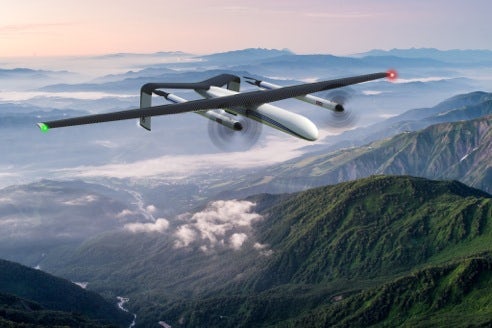Several different organizations are trying different ways to keep unmanned aerial vehicles, UAVs, up longer. We’ll look at three recent efforts in long-endurance missions, each with a unique technological approach. Wirth Research – Hydrogen Fuel Cell Wirth Research is now constructing a new tilt rotor, Vertical Take Off and Landing (VTOL), hydrogen fuel cell powered, advanced terrain-mapping drone. Carrying a payload of sensors and onboard data processing capabilities, the vehicle will be powered by a complete H2 storage, control and power system provided by HES of Singapore, a specialist in ultra-light hydrogen fuel cells. The Wirth machine’s missions range from precision agriculture, to pipeline and cable inspection for utilities, surveillance and other security-related tasks, through to detection and monitoring support for ordnance clearance operations. Combining the ability to carry a large payload and provide up to six-hour endurance in the VTOL configuration meant shifting from battery to hydrogen power. HES Founder and CEO, Taras Wankewycz, said, “We are shifting gears …
Fuel from Seawater
The ancient mariner may have been surrounded by water unfit to drink, but the U. S. Navy sees its ships as surrounded by seawater that could be converted to fuel for its fleet or aircraft. This long-time ambition is possibly being fulfilled by researchers at the U. S. Naval Research Laboratory (NRL), Materials Science and Technology Division, who recently flew a radio-controlled model airplane on seawater-derived fuel. Dr. Heather Willauer, NRL research chemist, explains, “In close collaboration with the Office of Naval Research P38 Naval Reserve program, NRL has developed a game changing technology for extracting, simultaneously, CO2 and H2 from seawater. This is the first time technology of this nature has been demonstrated with the potential for transition, from the laboratory, to full-scale commercial implementation.” The process is able to convert the recovered gases to liquid hydrocarbon fuel. Dr. Willauer’s team recently flew a replica of a WWII P-51 Mustang in the red-tail colors of the Tuskeegee Airmen. The craft’s two-stroke …

